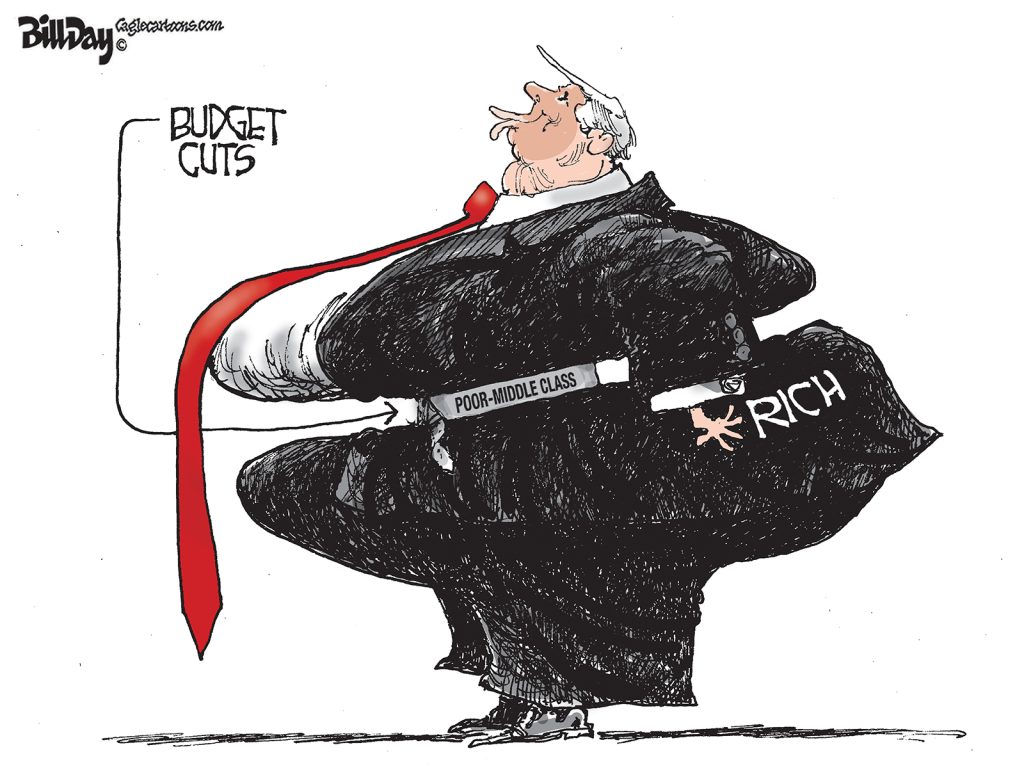Earlier this week, we posted the most read blog post of 2014: Creating a Culture of Opportunity for Memphis. You can read it here.
The rest of the top 10 posts:
#2 — It’s The Memphis Region, Not The City, That’s #1 in Poverty
“Suburban conventional wisdom about Memphis is that it is full of poor people, but the times, they are a-changin’. It’s the suburbs’ poverty rates that produce headlines like, “Memphis #1 in poverty…The area outside Memphis is #8 in high poverty rates among U.S. suburbs, and it’s this ranking that pushes the MSA to #1, provoking misleading headlines like “Memphis #1 in Poverty.”
#3 — Major Economic Opportunity: A Living Wage for Memphis Households
“It goes without saying that the economic benefits pale in comparison to the human consequences of a median household income in Memphis that does not reach the level of a living wage. If every household received the living wage needed for one adult and one child, it would create $243 million in new income in Memphis. If every household received the living wage needed for an adult and two children, the direct economic impact would be $2.1 billion.”
#4 — Youth Crime Coverage Cries Out For Balance
“It is impossible for us to remember a time when Memphis has been subjected to such an unrelenting barrage of hysterical reporting and the slanting of stories to validate the clear narrative that African-American youths are marauding all over Memphis and that youth violence is uncontrollable and an incurable cancer on this city…Here’s a headline you’ll never hear on television news these days: youth violent crime is down.”
#5 — Needed: Memphis-Centric Regionalism
“Because our corner of the world focuses more on creating high-quality roads for trucks and new corridors for development, there is always one more unnecessary project (think I-269) and the plethora of road expansion plans so traffic moves faster from 7:30 to 9 a.m. and 4:30 to 6 p.m. each workday…For example, it’s not unusual to hear Memphis and Shelby County officials call for regional progress and to urge regional strategies that embrace the best interest of area’s cities. And yet, there’s little of that kind of commitment flowing from the are outside Memphis back to the center.”
#6 — Conversations About Race First Step Toward Solutions
“Meanwhile, a majority of Americans still delude themselves into believing that everyone has the power to pull themselves up by their bootstraps and pay significantly more attention to what Kim and Kanye are doing than the concentrated poverty that is a birthright of children born into too many urban census tracts. The inner city poverty rate in Memphis for children is 40%, and the overall poverty rate is 36% in the inner city; however, in five census tracts, the poverty rate is more than 60%.”
#7 — I-269: Driving to Greater Economic Segregation
“Let us say this clearly and unequivocably: there is no economic or social benefit to City of Memphis as a result of I-269. Don’t believe the propaganda or the breathless media headlines. Wrapping I-269 in a shroud of terms like smart growth, knowledge economy jobs, New Urbanism and open space protection, supporters of the interstate suggest with straight faces that Memphis will benefit from new economic growth and development that the interstate will provide. Memphis’ ability to compete in the new economy is undercut by the hollowing out of the middle class, by the worst economic segregation of the 50 largest metros, by the quickening loss of college-educated 25-34 year-olds, a 15% house vacancy rate that’s doubled since 2000 and 20% of Memphis families living on less than $8,700 a year.”
#8 — Memphis’s “Special Gift” for Young Professionals
“Memphis is struggling, our challenges are daunting, and maybe, just maybe, we should acknowledge those facts in making a pitch for the 25-34 year-old college-educated talent that we need to compete in today’s economy. It’s a compelling offer that we have to make. A sizable number of this demographic are not only looking for jobs but for ways that they can do something meaningful and that they can contribute substantively to make the world better. It’s hard to think of a community that would more appreciate their contributions or need them more than ours.”
#9 — Crime Rate Calls for Broader, Well-Funded Responses
“The recent uptick in Shelby County violent crime – property crimes continue to go down – produces the predictable call for more police officers…Police officers say the increase is caused by a reduction in commissioned officers, although there’s no information to show that these officers were even on the street since, according to the city’s five-year fiscal plan, City of Memphis significantly decreased civilian employees and replaced them with a significant increase in commissioned officers doing administrative, data entry, and other duties. In other words, saying that the number of commissioned officers is down tells us nothing. Correlation is not causation…As the axiom says, when you’re a hammer, every problem is a nail. That’s often the case when the crime rate goes up here because “answers” are routinely looked from police officials and prosecutors who default to their call for more police officers and longer sentences although there’s no cause-effect data to justify it.”
# 10 — Senator, Have You No Sense of Decency?
“Where is Joseph Welch when we need him? He was the bookish general counsel for the U.S. Army who famously brought the end to U.S. Senator Joe McCarthy’s steady diet of demagoguery, reckless accusations, and unsubstantiated accusations as part of his chilling, life-destroying campaign of anti-Communist witch hunting. Mr. Welch famously brought down Senator McCarthy with an indignant response that ended with a question. He asked: ‘Have you no sense of decency, sir? At long last, have you left no sense of decency?’ Today, it’s a question that he could have put to Tennessee Senator Brian Kelsey, who continues his own campaign of extremism, this time with a bill that absolves businesses from lawsuits if they refuse services and goods to same-sex couples “if doing so would violate sincerely held religious beliefs.”
Four posts that were barely edged out of the Top 10:
* City Budgeting As Contact Sport
“The forces that have made city budgeting increasingly difficult since the Great Recession converged to make this a watershed year for city government, and that was before the unfunded pension liability was added to it. More than anything, City of Memphis has more and more felt the stresses that stems from declining property values, and 2014 real estate appraisals by the Shelby County Assessor of Property were down a troubling $821 million (from $30.47 billion in 2013 to $29.65 billion in 2014). Total assessments in 2014 were $8,960,241,078, which in only one year was a drop of almost $300 million in the primary source of revenue for city government.”
* Amendment 1 Is Wrong For So Many Reasons
“Christian doctrine says that God gave us free will. The backers of Amendment 1 would take that away. They want to take away the options of women in Tennessee to make their own health decisions and they have gone to the extreme of trying to amend the Tennessee Constitution to do it. There is so much wrong with Amendment 1, from the justifications for its passage by the Legislature to lies about how liberal Tennessee abortion laws are and from the arrogance of legislators who abuse their power by injecting their personal political and religious orthodoxy into state law to the absurdity of extremist legislators getting between a woman, her doctor, and the most personal decisions of her life. But it’s also stupid governing.”
* Attacking Memphis’ Malignant Problem, Poverty
“The life of the poor in Memphis is so often about navigating through choices that are too often self-defeating, regardless of which one is chosen. There’s the penalty that is paid if you are a resident of public housing and get a job. There’s the challenge of finding services for your child in neighborhoods where services are being cut by governments that claim to care most about children. And there is the way that poor men and women are forced to buy a car to get to job centers that aren’t on a public bus route. In a city with serious concentrated poverty, this makes the hurdle even higher for too many of our people. They are living in the ‘C’ of poverty where the poverty rate is 36% – although there are five census tracts where the poverty rate is more than 60%. It’s almost enough to make the citywide poverty rate of 27% sound good.”
* Creating a City That Loves Itself
“One marker for a city that loves itself is in good urban design that at the least ties together a city with a cohesive sense of itself, that is about the connectivity of special places, and that at its best produces an architectural pride and commitment that lift up a city and shape its pride and character through its insistence on architectural integrity, high-quality design, and quality control in execution. While cities around the U.S. are spending hundreds of millions on their riverfronts, here, we wring our hands because the signature placemaking project on the river cost $43 million. In truth, from the beginning, the project should have been twice that amount so it could make some much-needed improvements to Tom Lee Park, it could put the parking lot underground, it could restore the cobblestones, and it could create a charming water park at the former Jefferson Davis Park.”



